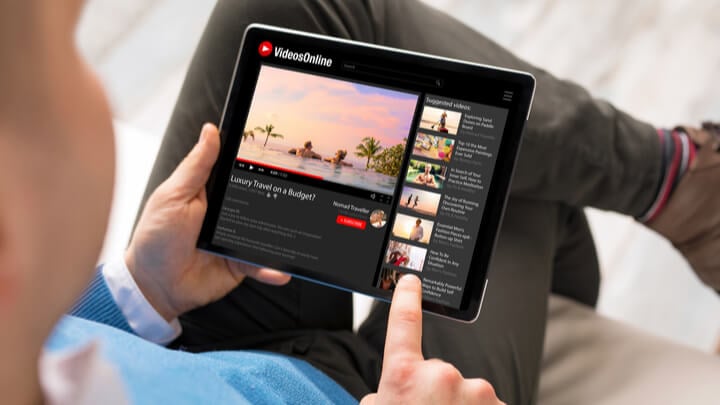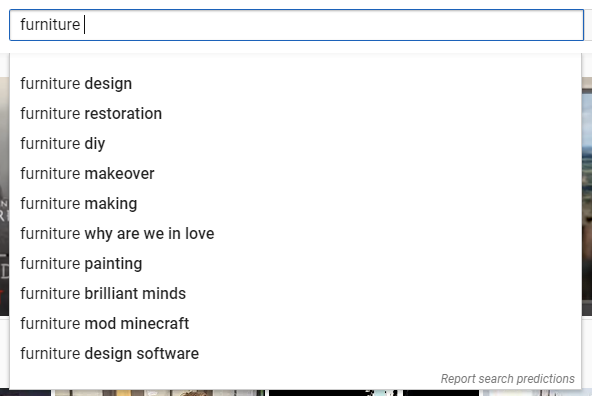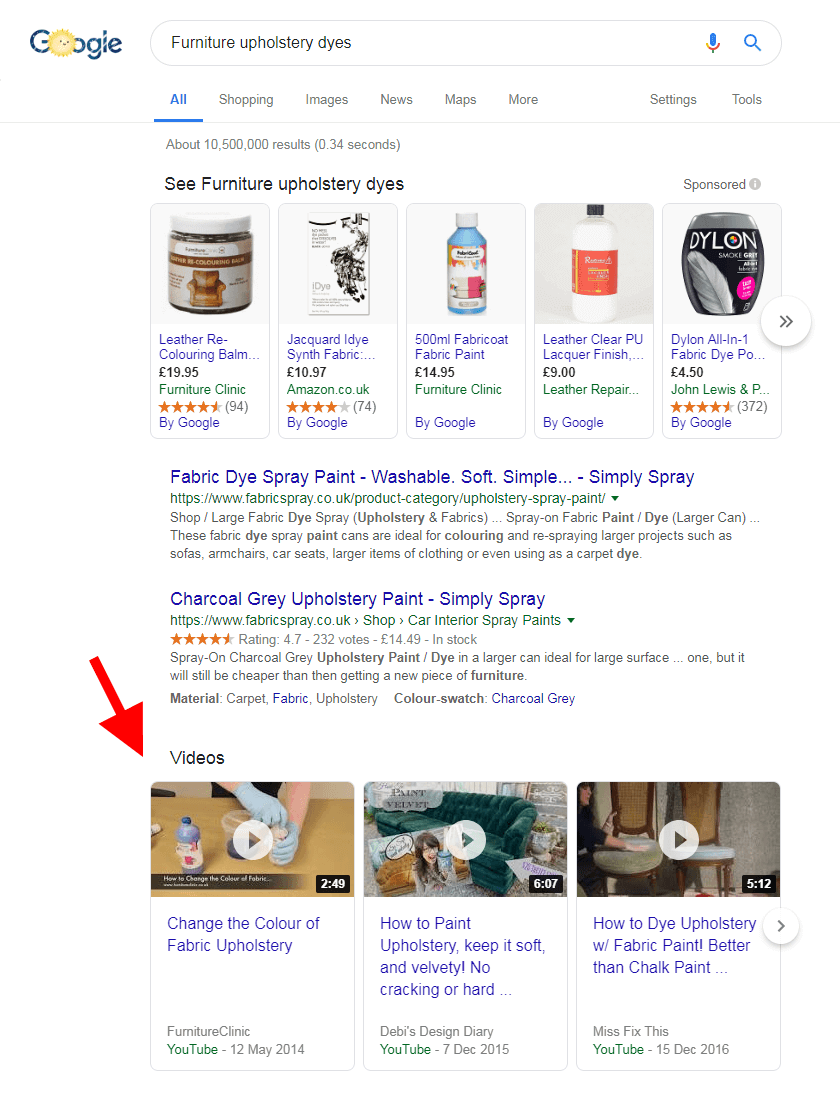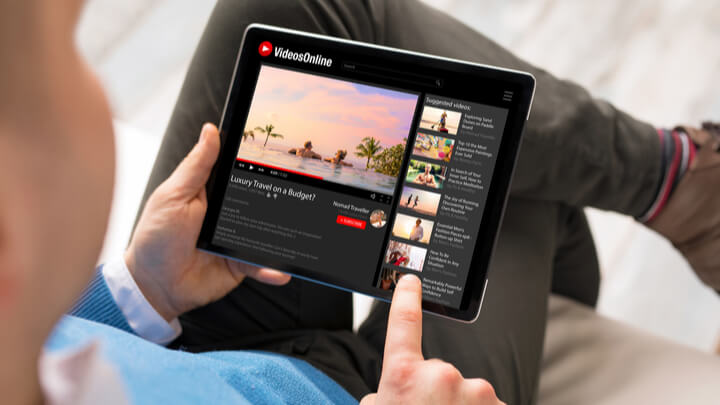SEO Tips for E-commerce: Improve Your Online Shop's Ranking in Google
SEO is an important tool for e-commerce businesses to bring in new customers. Here are the best tips for your online shop to rank higher in Google.

YouTube videos can be a great way to get exposure for your online shop. According to Jumpshot, YouTube is the world’s second-largest search engine, with more than a billion users and availability in 88 countries. That means that YouTube accounts for about 4.3% of all web searches. Compared to Google (86.5%), this may seem insignificant, but that’s actually not the case once you realise that the other search engines’ share is less than 2.2%.
Making YouTube videos doesn't have to be expensive. And if you already use YouTube as a marketing tool for your business, then of course you’ll want to stand out from the other videos. We can help you with this! In this article, we’ll give you tips and various step-by-step schemes for achieving the best performance for your online shop’s videos on YouTube.
Just as with SEO for Google, you’ll begin by looking for relevant keywords. Which words will your target group use to search for videos? If you can figure this out, there’s a good chance that you’ll be listed first for your target group and will get many viewers, especially if competition is low.
You can do this keyword research before you’ve recorded a video and then have the video focus on that keyword, but you can also do the keyword research once you’ve produced the video as well.
A good strategy for finding interesting keywords is simply to go to YouTube and type in a word that fits your video. If, for instance, you’re active in the furniture industry, you can type ‘furniture’ into the search bar. Then, you get auto-completed suggestions offered by YouTube.
To the average YouTube user, these might be simple search suggestions. You should think of these suggestions as a tool showing you the most-used keywords that start with the word 'furniture'.

Amongst these results, there can also be “long tail keywords” (with 3 or more words). This means that they’re relatively high-ranking keywords for which there are not a lot of competitors. This means that it will be possible for you to rise through the ranks much easier. You can choose a number of interesting keywords for your long list.
The second strategy for expanding your long list is to go to a video that’s popular in your sector and look at the tags that are used for it. To see a video’s tags, you can use a tool such as vidIQ Vision for YouTube.
If it’s a highly-viewed video, then there’s a good chance that it has been optimised for a popular keyword. For this, you can also employ words that are used in the title and the description. Then add the words that you find there to your long list as well.
A third strategy is to use a tool. Keyword Tool is a very good option for this, except that the free version doesn’t offer you very much. You can, however, gain some inspiration there in combination with the other two strategies.

Now that you’ve compiled a list of interesting keywords, it’s time to select some that best match your video.
It’s smartest to concentrate on words for which there’s not much competition. This is especially important if you’re not yet a major player on YouTube. To discover what is popular in searches, you can use Google Trends or Keyword Tool (already mentioned).
Now that you know the most popular search terms, you can work out what to concentrate on. If a keyword in Google Trends scores 100, this means that it’s a very popular search term. A score of 50 means that the keyword is about half as popular and 0 is not at all popular.
As a new channel, you won’t want to aim for the highly popular words immediately. There’s too much competition for these terms and the chance of ranking highly is extremely small. Of course, you don't want to target the words that no one is searching either. Aim for the happy medium.
Now that your long list has become a shortlist, the last step is to search for your keywords in Google. The trick, in fact, is that you can best optimise your video with a keyword for which videos are already displayed in Google’s search results.
This is because Google shows videos only for certain keywords.

As you can see in the image above, the search for 'Furniture upholstery dyes' reveals videos in the Google search results. This means that you can effectively use this keyword to optimise your video.
If your video is also shown on Google, you can achieve 2-5% more views on YouTube! Of course, this is something you’ll want to exploit. If you are seen on Google, too, you’ll get viewers not only via YouTube but also via Google.
Now select one single keyword to optimise your video with. Incorporate the word in the title, description and video tags.
Bonus tip: Mention your keyword(s) in the video. YouTube creates a transcript to your videos automatically and therefore knows what’s being said.
Now that you’ve found a good keyword, it’s time to optimise the video itself.
YouTube says that audience retention is really important in achieving higher rankings. What this boils down to is that YouTube rewards you if people watch the video right to the end. The earlier they stop with the video, the less you’re rewarded. So how do you make videos that people will want to keep watching?
Around 20% of the people watching your video will switch to another one within the first 10 seconds. So you have to immediately convince your viewers that they’re at the right place.
Make a short but effective summary. If, for example, you’re making a video about restoring furniture using special furniture dye, then say that literally at the start of your video. Explain what you’re going to do and how you do it. Make it clear who will find this video useful.

Shutterstock/Max kegfire
Avoid long introductions before you get to the core of the video. Viewers are there for the subject matter of your video, so they want to see this quickly. If you give a long introduction to the subject, people will leave sooner.
You don’t want to reveal everything to the viewer right away. They have a certain reason for viewing your video; once they’re staying with it, you don’t want to give everything away immediately.
To make this clear, we’ll again use the example of the video about furniture restoration. Half way through showing how you do this, you say, “You’re probably thinking, what makes a good furniture dye? We'll get to that a little later in the video!” Or, “Do you want to know how to fix rust spots? We’ll be showing that in a bit.”
This ensures that people keep watching because they know what’s coming and really want to know more about it.
Bonus tip: Longer videos end up higher on YouTube (but only if people keep on watching).
Do you want to start making videos for your online shop, but don’t really know how to get started? Get your camera-feet wet with some product videos for your online shop. In our whitepaper, you can read everything about making the perfect product video!
The Click-Through-Rate is the percentage of YouTube users who click on your video if it’s shown in the results. Of course, the more clicks your video scores, the better.

Shutterstock/Kaspars Grinvalds
But each time someone scrolls past your video and clicks on another one, your CTR decreases. This tells YouTube that people prefer to view other videos in the results based on the keyword they’ve used.
Here are two pointers for attracting viewers to your video if it appears in the results:
The thumbnail is the image people see when they’re scrolling through the results. People first look at images before they look at the text, so be clear what the video’s about and attract attention with an appealing and informative image. Sometimes it can be helpful to include the text of your topic in the thumbnail image.
After you’ve attracted attention with an appealing, distinctive thumbnail, you need a captivating title.
As mentioned earlier, you also need to incorporate the keyword you’ve researched in the title. What also works well is swapping between capitalised words and lowercase words (e.g. “MUST SEE card trick”). You can also write everything in capitals and then add special characters (e.g. *SPECIAL CARD TRICKS*).
Additionally, it’s often better to have as short a title as possible. Ensure that the title really gets to the point.
A big part of social media and search engine rankings is the level of engagement your video can inspire with the viewers.
An important determinant for YouTube is the number of new subscribers you collect after watching a video. The idea is that the user apparently found your video so interesting that they’ve subscribed to your channel! That is, of course, a good sign for YouTube and your video will quickly rise through the rankings. Be sure to encourage viewers to subscribe to your channel at the end of your video!
Reactions to the video, how often it’s shared, and the number of likes naturally count towards your video’s YouTube ranking.
If someone posts a reaction to your video, this tells YouTube that they found the video interesting enough to engage with it. Therefore, it's advisable to encourage your viewers to write in the comments section. If you can manage to reply to those comments, even better!
If someone clicks on ‘like’, this also tells YouTube that it’s an interesting video.
And of course, people don’t share bad videos. Therefore, if your video is frequently shared on social media, this gives you plus points as well.
To rank highly on YouTube there are many points you need to consider. Among them, the number of new subscribers and optimising your video for the right keywords are extremely important.
This article was originally published and adapted from our Dutch blog: Zo kom je bovenaan bij YouTube! – YouTube SEO
13/10/21SEO is an important tool for e-commerce businesses to bring in new customers. Here are the best tips for your online shop to rank higher in Google.
Valentine's Day has grown in popularity across Europe. We're sharing some romantic statistics (redundant, right?) and look at 9 marketing tips for V-day.